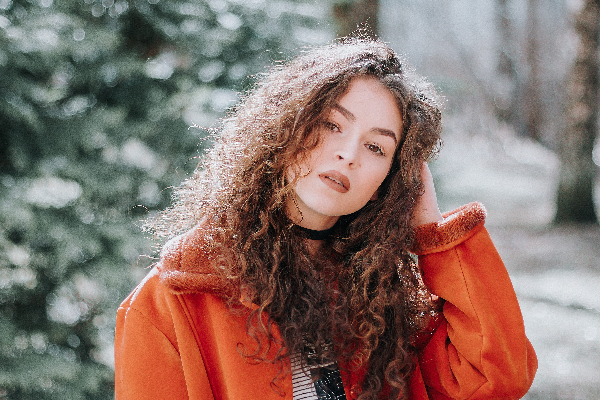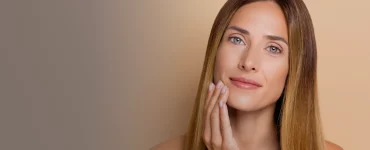Do not be alarmed if you have noticed your hair thinning. Expectedly, you experience volume loss over forty as another symptom of the changes that may have started in your body. Differences are both felt and seen, and for many women, less hair is too much to handle.
Hair is a woman’s crown; it is something we spend our lives trying to perfect. We cut, we grow, we color, and we try different hairstyles. When we reach our mid-thirties, our look starts to settle. We decide on a color, length, and style best suited to us, and for a few years, we experience hair bliss.
However, this changes when we reach forty. We do not only begin to feel different, but we can see physical signs of aging. One of these: our hair begins to lose volume. It is not as thick or full as it once was.
Although it can feel overwhelming, there are plenty of solutions to treat volume loss. Starting with understanding what it is, why it is happening, and how to recover from volume loss over forty.
What Is Hair Volume Loss?
The diameter of the hair fiber diminishes when volume loss occurs. In other words, your hair strand becomes thinner. When you reach your forties, the change in hormone levels and blood circulation causes less blood flow to the scalp, resulting in the hair follicles shrinking. In turn, your hair strand becomes fine and shortens. It is not uncommon for women to say that their hair does not grow as it once did.
Signs of hair volume loss
- You experience thinning for over six months
You will notice your hair lose volume over six months or more. You will see that your hair is thinner in one place more than another.
- You experience thinning at your temples or on top of your head
The most apparent place volume loss shows up is on the top of the head at your hair’s parting and next to your temples. Your scalp will also appear more visible than before.
What Is the Difference Between Volume Loss and Hair Loss?
Hair loss means that hair falls out, whereas volume loss means thinner hair strands. You are not losing hair but losing the density of your hair. Hair loss happens rapidly, and it is easy to tell when you are experiencing it. The first signs of hair loss are more strands on your shower floor, in your brush, and on your pillow. Volume loss, however, is a gradual process, and you may not notice until the process is well on its way. The subtleness of it is what results in panic for many women.
You can check if you have lost hair volume by pulling your hair back into a ponytail. You will notice the ponytail itself feels thinner. Your hair may also look less lively than before, and this is because when your hair loses volume, it also becomes more brittle.
Why Do Women Over Forty Experience Volume Loss?
When women approach menopause, the body’s female hormones – estrogen and progesterone – decline; these hormones have been responsible for keeping hair in a growth phase for longer. However, with the increase in androgen hormones, the hair follicles shrink, and new hair growth slows down.
How Can Women Recover Volume Loss?
Combatting volume loss is a holistic approach rather than a one-step, quick solution. Many times, hair can recover from volume loss. However, genetics may be a factor in the effectiveness of thereof.
Your hair must be brought back to an optimal state to grow. The scalp needs enough oxygen and blood flow; a balance of nutrients, vitamins, and minerals; and targeted hair products. A combination of the below may help with recovering volume:
- Vitamin supplements
A daily vitamin has many benefits. However, ensure that your daily supplement contains B vitamins such as Biotin, B3, and Vitamin C., all of which promote hair health, slow down hair aging, and aids in fighting any hair loss.
- Antioxidants
Antioxidants are useful age-defying minerals that promotes Collagen and healthy hair. It can be included in your diet by taking supplements or by eating food such as blueberries. It can also be administered by using antioxidant-rich products.
- Diet
A balanced diet filled with nutrients that encourage hair growth helps your body target hair loss from the inside. Healthy fats and proteins – such as eggs, avocado, fatty fish, and spinach – are good sources for increasing your hair’s fullness.
- Massage
A gentle massage of approximately fifteen minutes using essential oils or hair oil encourages blood circulation to your scalp. Increased blood flow will rejuvenate your hair follicles, allowing them to produce thicker hair strands.
- Hair products
Use hair products like Allurium Beauty formulated to stimulate the scalp, add volume to the root, and increase the diameter of the hair strand. Often these products also contain essential oils for hair growth and antioxidants to fight hair aging.
Try Better Not Younger’s Volumizing Range
for Thicker, Fuller Hair
You know now why you are experiencing volume loss, and you can move on to remedying it. A combination of nutrients, vitamins, and the correct products will recover your hair from volume loss and help it look fuller and healthier again.
Hop over to the Better Not Younger Shop for the full range of Volume and Fullness products. Each product is formulated to target aging hair and increase volume while leaving your hair soft and full of life. For a special pick me up, Try the Lift Me Up. Use it before styling to lift roots and thicken your hair strands.
All the Better Not Younger products are designed to help women in their 40’s and above target hair aging concerns. These hair care products are hypoallergenic, paraben-free, and suited to all hair types and textures.





















